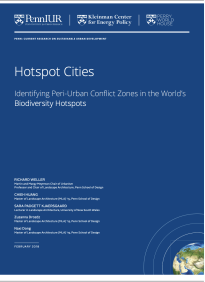Key Message
The report highlights the critical role of peri-urban areas in supporting biodiversity and providing essential ecosystem services to cities. It reveals that the majority of cities in biodiversity hotspots lack long-term planning visions that include biodiversity values, highlighting a significant gap in urban planning. To address this, the study advocates for realistic spatial plans that concentrate urban growth in areas of least impact while ensuring landscape connectivity for biodiversity. By forming a global alliance for knowledge-sharing and supporting innovative urban design projects, hotspot cities can lead the way in integrating biodiversity conservation with urban development, aligning with the goals of SDG 11 (Sustainable Cities and Communities) and 15 (Life on Land).


